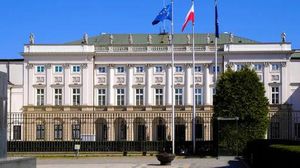The surge of illegal immigration across the United States has been accompanied by alarming criminal activities, prompting authorities to take immediate action. Recently, two Cuban migrants wanted for attempted murder were captured after checking themselves and another illegal migrant involved in drug trafficking was arrested during collaborative operations spanning several states.
Jaroscar Chavez Silva, 36, and his brother Roshiel Chavez Silva, 30, had become fugitives after their involvement in a gunfire incident last month near Orlando, Florida. The duo was sought under warrants issued on September 16 and was tracked by the U.S. Marshals Service down to New York City, where they were apprehended this Thursday at the Creedmoor shelter, which is primarily for asylum seekers and recent migrants.
Sources indicated the brothers had been hiding out for weeks before their arrest at the massive shelter situated at the former Creedmoor Psychiatric Hospital. They were reportedly captured with a firearm, leading to serious criminal charges. Jaroscar Chavez Silva faces two counts of fourth-degree criminal possession of a weapon and was seen quietly escorted out of the precinct, facing news cameras with no comment.
The brothers undertook perilous journeys across the U.S. border to reach safety. Jaroscar crossed the border at San Luis, Arizona, back in March 2022, and had been ordered to appear before an immigration judge next month, whereas Roshiel entered the U.S. at Brownsville, Texas, shortly after his brother and received asylum status with plans to stay.
While the brothers’ arrest has drawn media attention, it forms part of larger patterns observed within migrant communities. The rapid influx of migrants has led to heightened tensions, particularly with reports of violence surfacing within shelters. Creedmoor has faced criticism from residents for sporadic outbreaks of violence, including those allegedly instigated by gang activity, particularly from the Venezuelan street gang, Tren de Aragua. This gang is alleged to be involved with brutal crime sprees across neighborhoods and is suspected of using shelters as bases for operations.
Simultaneously, Homeland Security Investigations (HSI) announced the capture of two other illegal migrants who were linked to extensive drug operations in Maryland and Georgia. The arrests came shortly after Queens prosecutors indicted ten members of the Tren de Aragua group for coordinating similar drug trafficking endeavors back home.
Images released by HSI showed one of the illegal migrants, appearing heavily restrained, being led away as part of this larger crackdown on gang-related crime. More than 30 weapons were reportedly seized from the pair, inclusive of illegal firearms and ammunition.
This multi-faceted operation involved collaboration between local police departments, Alcohol, Tobacco, Firearms, and Explosives (ATF) agents, and HSI from multiple regions. Queens District Attorney Melinda Katz confirmed the severity of the charges against arrested gang members, stating their plans reached beyond state borders, hinting at connections to international drug trafficking organizations, particularly stretching down to Colombia.
The crackdown emphasized the alarming dynamics of migrant-specific criminal activities and highlighted the multi-layered strategies police must employ to confront these issues. Among the serious concern is the peddling of dangerous drugs, with reports of pink cocaine entering local markets. This drug combines elements of ketamine, MDMA, and ecstasy, igniting fears of growing addiction rates and public safety dangers.
Authorities are not just capturing criminals; they are also grappling with the broader consequences of these arrests on regional security. The interplay between illegal immigration and organized crime fuels discussions among lawmakers about immigration protocols and potential reforms to protect communities from violence often associated with such criminal networks.
While the migration dynamic to the United States continues to evolve with formidable challenges lying at the intersections of crime and asylum, the authorities remain vigilant, often launching multiple initiatives to address and combat these burgeoning issues. The interactions of criminal syndicates with vulnerable migrant populations create precarious risks, necessitating urgent strategies to prevent violence and bolster safety nationwide.



